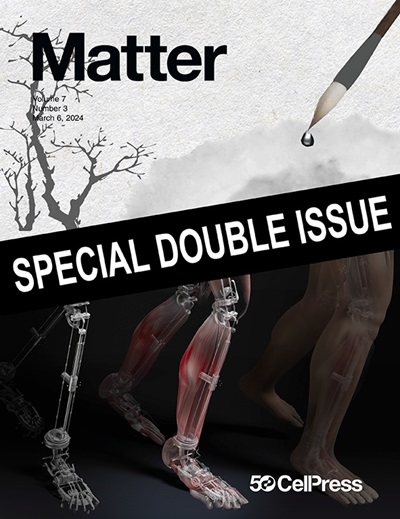从蚀刻到工程:将钌限制在MXene中间层中用于位置控制的氢解
IF 17.5
1区 材料科学
Q1 MATERIALS SCIENCE, MULTIDISCIPLINARY
引用次数: 0
摘要
氢解法有望将聚烯烃转化为液态烃,但催化剂存在聚合物可及性有限和甲烷生成过多的问题。在这项工作中,Kamali等人将Ru限制在MXene层中,增强了聚合物对活性位点的访问,并以更高的反应速率将反应选择性转向更有价值的产物。本文章由计算机程序翻译,如有差异,请以英文原文为准。
From etched to engineered: Confining ruthenium in MXene interlayers for site-controlled hydrogenolysis
Hydrogenolysis is promising for converting polyolefins into liquid hydrocarbons, but catalysts suffer from limited polymer accessibility and excessive methane formation. In this work, Kamali et al. confined Ru within MXene layers, enhancing polymer access to active sites and steering reaction selectivity toward more valuable products at a higher reaction rate.
求助全文
通过发布文献求助,成功后即可免费获取论文全文。
去求助
来源期刊

Matter
MATERIALS SCIENCE, MULTIDISCIPLINARY-
CiteScore
26.30
自引率
2.60%
发文量
367
期刊介绍:
Matter, a monthly journal affiliated with Cell, spans the broad field of materials science from nano to macro levels,covering fundamentals to applications. Embracing groundbreaking technologies,it includes full-length research articles,reviews, perspectives,previews, opinions, personnel stories, and general editorial content.
Matter aims to be the primary resource for researchers in academia and industry, inspiring the next generation of materials scientists.
 求助内容:
求助内容: 应助结果提醒方式:
应助结果提醒方式:


